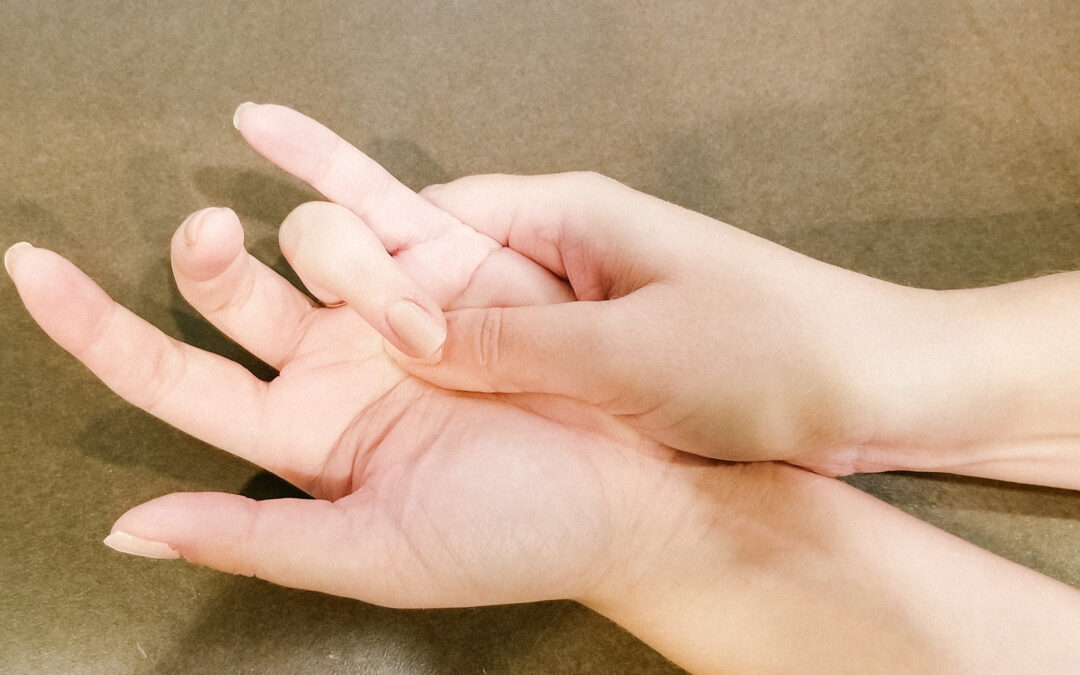Trigger finger is when one of your fingers gets stuck in a bent position. Your finger may bend or straighten with a snap — like a trigger being pulled and released.
What causes trigger finger?
Each of the tendons which flex your fingers passes through a tunnel in your palm which allows it to glide smoothly as the finger bends and straightens. This tunnel is the “tendon sheath.”
Along the tendon sheath, bands of tissue called “pulleys” hold the tendons close to the finger bones. The tendons move through the pulleys as the finger moves. The pulley at the base of the finger is called the “A1 pulley.” This is the pulley that is most often involved in trigger finger.
With trigger finger, the A1 pulley becomes inflamed or thickened, making it harder for the flexor tendon to glide through it as the finger bends. The flexor tendon may also become inflamed and develop a small nodule. When the finger flexes and the nodule passes through the pulley, you feel catching or popping and often pain.
Sometimes the finger locks and becomes stuck in a bent position and you need to use your other hand to straighten the finger.
While we often do not know what caused your trigger finger, we do know factors which increase your risk for developing the condition:
- Repeated gripping. Activities involving repetitive hand use and prolonged gripping may increase your risk.
- Certain health problems. People who have diabetes or rheumatoid arthritis are at higher risk.
- Your gender. Trigger finger is more common in women.
- Carpal tunnel syndrome surgery. Trigger finger may be a complication associated with surgery for carpal tunnel syndrome surgery, especially during the first six months after surgery.
What does trigger finger feel like?
Symptoms of trigger finger include:
- Finger stiffness, particularly in the morning
- A popping or clicking sensation as you move your finger
- Tenderness or a bump (nodule) in the palm at the base of the affected finger
- Finger catching or locking in a bent position, which suddenly pops straight
- Finger locked in a bent position, which you are unable to straighten
Trigger finger can affect any finger, including the thumb, and may affect more than one finger at a time. Triggering is usually worse in the morning or when you firmly grasp an object.
What can I do to help my trigger finger?
Your therapist will suggest:
- Rest. Avoid activities that require repetitive grasping or the prolonged use of vibrating hand-held tools until your symptoms improve. If you can’t avoid these activities, padded gloves may help.
- A splint. Your therapist may have you wear a splint to keep the affected finger straight for up to six weeks. The splint helps rest the tendon. To see different types of splinting click here and here.
- Stretching exercises. Your therapist may also give you gentle exercises to help maintain mobility in your finger.
What about surgery for my trigger finger?
If your symptoms are severe or if conservative treatments haven’t helped, your doctor or therapist might recommend:
- Steroid injection. An injection of a steroid medication near or into the tendon sheath may reduce inflammation and allow the tendon to glide freely again. This is the most common treatment and it’s usually effective, but it sometimes takes more than one injection.
- Percutaneous release. Your doctor inserts a needle into the tissue around your affected tendon. Moving the needle and your finger helps break apart the constriction that’s blocking the smooth motion of the tendon.
- Surgery. Working through a small incision near the base of your affected finger, a surgeon can cut open the affected section of tendon sheath.
Where can I get help for my trigger finger?
You can schedule an assessment with a hand therapist at North 49 Physical Therapy by calling the clinic at 306-343-7776 or by booking online at www.north49therapy.ca.
Click here to find out more about North 49’s hand therapy services.


